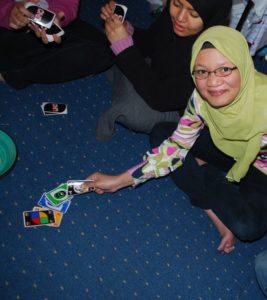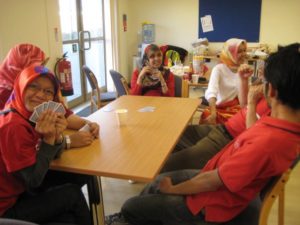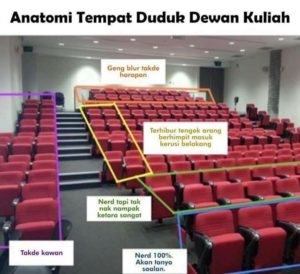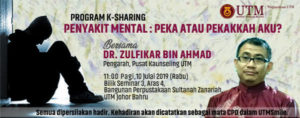*ADAB MURID — PENUNTUT*
*Adab Sebelum Masuk Majlis Ilmu*
1. Sucikan hati — ikhlas menuntut kerana Allah. Jauhi segala macam niat yang menyimpang seperti ingin kepujian, ingin berdebat dll.
2. Kosongkan hati seolah2 tidak tahu apa2 dan mohon Allah Ta’ala masukkan ilmu yang manfaat ke dalam hati.
3. Berwudhu. (Bagi wanita yang uzur memadai bersihkan diri seberapa mungkin.)
*Adab Semasa didalam Majlis Ilmu*
1. Hadapkan wajah (diri) kepada Allah mohon Rahmat, Keredhaan dan Kasih Dia didalam tuntut ilmu
2. Mendengar dengan teliti segala pengajaran Guru
3. Jika ilmu itu baru bagi kamu, jangan cepat bantah (walaupun dalam hati) kerana sesungguhnya terlalu banyak ilmu yag telah dicicirkan oleh ummat akhir zaman
4. Jauhi segala macam jahat sangka pada Guru
5. Jangan berbual / bercakap dengan seseorang kecuali benar-benar perlu
6. Jangan gunakan telefon bimbit
7. Jika ada kemusykilan tanya dengan sopan dan baik
*Adab selepas Majlis Ilmu*
1. Mohon Allah Ta’ala berikan kekuatan untuk mengamalkan ilmu yang dipelajari
2. Mohon Allah Ta’ala tambahkan cahaya Iman di dalam hati
3. Mohon Allah Ta’ala sentiasa Kurniakan kelapangan hati untuk tetap hadiri Majlis Ilmu
Perhatian:
1. Sesungguhnya adab penuntut ilmu amatlah banyak seperti yang dihuraikan oleh Sulton Auliya Shaikh Abdul Qodir JIlani, Imam Syazili, Imam Ghazali dan lainnya. Adab-adab yang tersebut di atas hanya lah sebahagian daripada adab-adab tersebut. Walau bagaimana pun dengan amalkan segala adab di atas mudah-mudahan akan tertunai segala adab-adab lain.
2. Menjaga adab kepada Guru dan adab-adab dalam keseluruhan Majlis Ilmu menjadikan ilmu yang di perolehi penuh keberkatan. Sedangkan tiada adab hilangkan keberkatan.
3. Pastikan kita hadir hanya Majlis Ilmu Ahlus Sunnah yang benar (tulen) yang disampaikan oleh Guru yang benar-benar terpercaya sebagai Ahlus Sunnah. Dan sebagaimana kami di fahamkan oleh Ulama terpercaya, yang terbaik adalah mengambil ilmu dari Mursyid yang siddiq, iaitu Pewaris Nabi sebenar yang sampai ilmu nya kepada Junjungan Besar Nabi Muhammad ﷺ.
Jika ada keraguan, istikharah dan mohon petunjuk Allah.
Moga memperoleh kejayaan dunia akhirat.
Maassalamah
_________________
Dari Meja Admin
*Kursus Murnikan Solat Siri 2 UTM*









